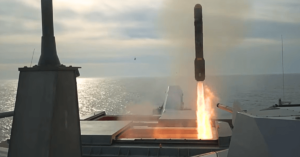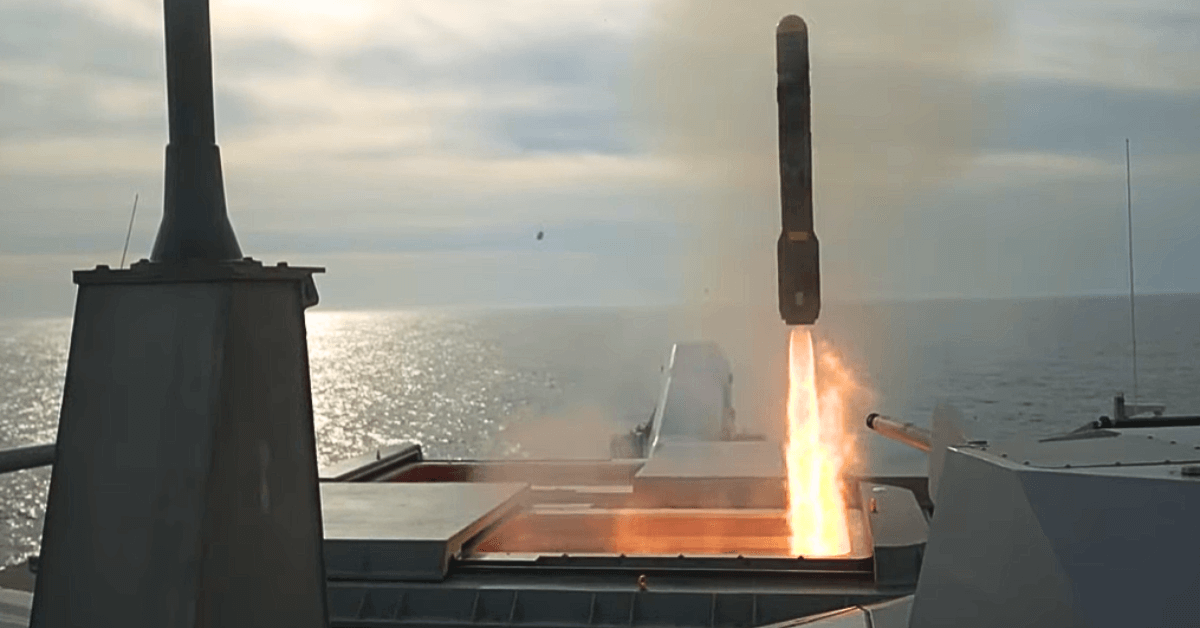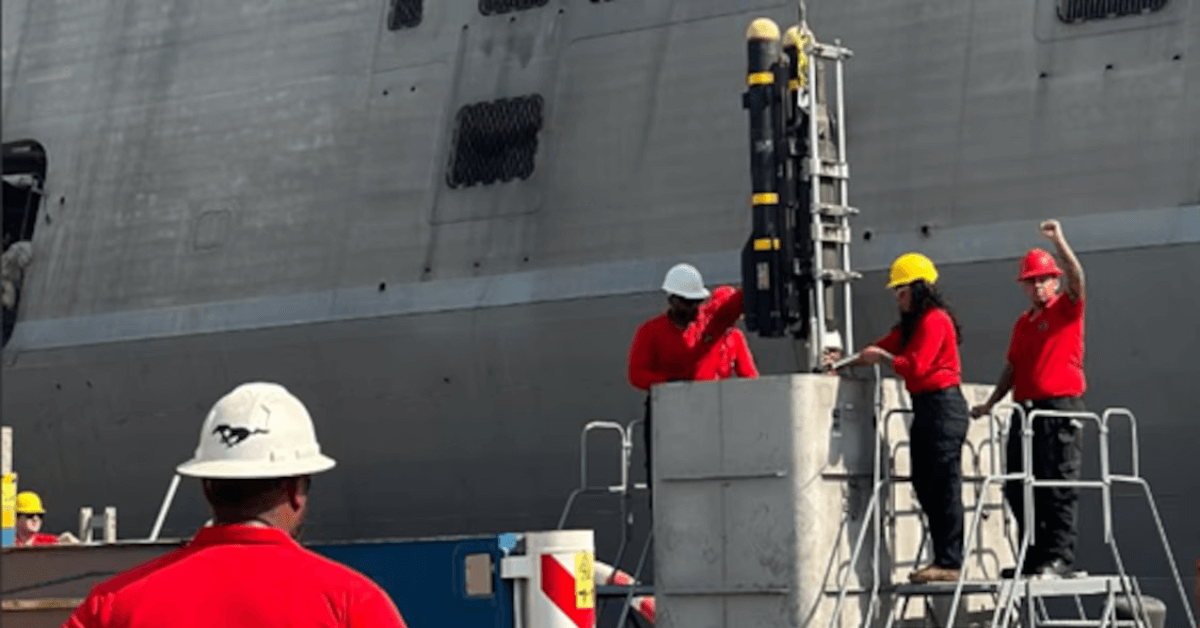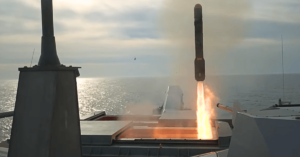
World’s First Ship With Full Carbon Capture & Storage System Ready For Pilot Testing
January 18, 2025
Yemen Kuwait Bank Sanctioned For Funding Houthi Attacks & Illegal Iranian Oil Trade
January 18, 2025

The U.S. Navy has upgraded the USS Indianapolis, a Freedom-class Littoral Combat Ship (LCS), with counter-unmanned aircraft system (C-UAS) capabilities.
This allows the ship to shoot down drones using radar-guided AGM-114L Longbow Hellfire missiles effectively. The upgrades were made during the ship’s deployment in Fall 2024.
The enhancements involved software and hardware modifications to the Surface-to-Surface Missile Module (SSMM), a key part of the LCS Surface Warfare Mission Package.
Initially, designed for targeting small boats, the SSMM now extends its capabilities to deal with surface, land and aerial threats.
The upgrade was made citing recent incidents in the Red Sea region where drones posed major risks to American warships.
Video Credits: NAVSEApa/YouTube
The program manager Captain Matthew Lehmann said that the collaboration with the Integrated Warfare Systems team enabled the Navy to meet the fleet’s needs without delay.
Rear Admiral Kevin Smith, Program Executive Officer for Unmanned and Small Combatants, says that these advancements strengthen the Navy’s operational agility and deterrence in contested environments.
The USS Indianapolis is the first Freedom-class LCS to receive these upgrades. It operated in various regions, including the Atlantic Ocean, Europe, and the Middle East, between March and November 2024.
It is also the first LCS to be awarded the Combat Action Ribbon.
Captain Mark Haney, commodore of Littoral Combat Ship Squadron 2, revealed that the USS Minneapolis-Saint Paul is next in line for similar upgrades.
This vessel will deploy later in 2025 with an enhanced package that includes new unmanned aerial vehicles and more weapons systems.

The SSMM can hold up to 24 Longbow Hellfire missiles, which use radar guidance for precise targeting. When launched from the ship, the missile’s radar locks onto its target and autonomously destroys it.
This system offers a cost-effective alternative to the Navy’s RIM-116 Rolling Airframe Missiles (RAM), which are primarily used for close-in defence.
While the RAM costs around $950,00 per missile, a Longbow Hellfire costs between $150,000 and $215,000 making it a more economical option for countering drones and other threats.
The Navy is also exploring the use of the AGM-179A Joint Air-to-Ground Missile (JAGM) as a successor to the Hellfire.
Experts believe these advancements will provide a protective shield for nearby vessels.
Drone threats have become a major concern for naval forces worldwide. The Houthis in Yemen, have used explosive-laden drones and boats to target ships.
References: U.S. Navy, The War Zone
Source: Maritime Shipping News


